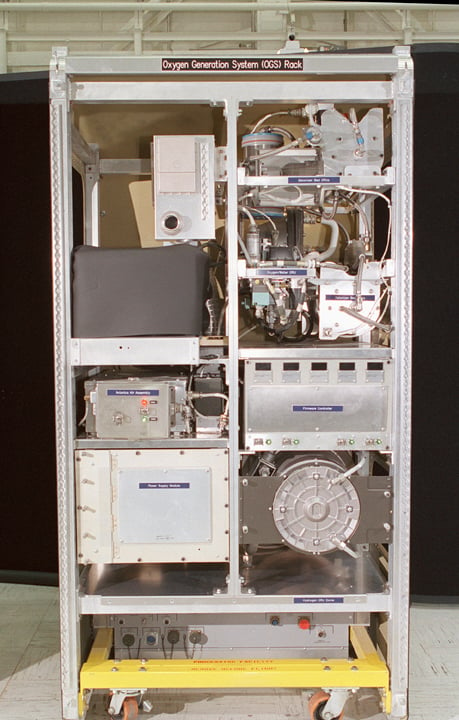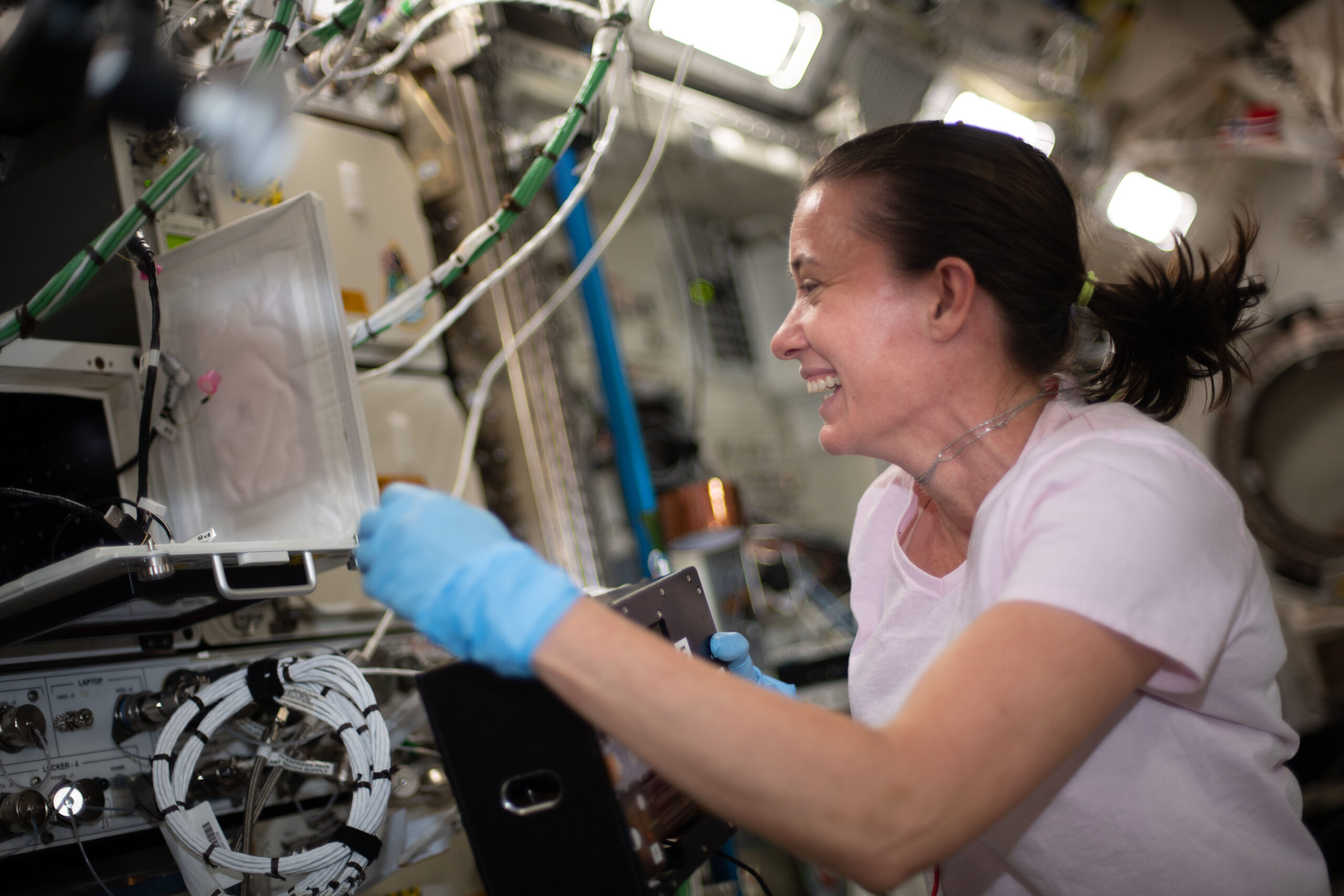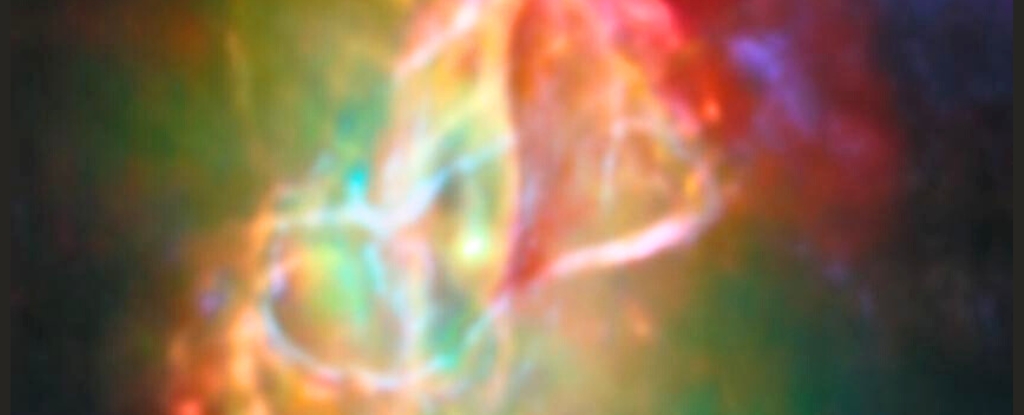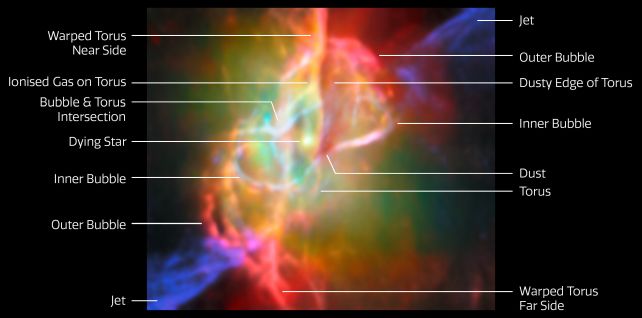In space, the one thing more important than ensuring access to food, water, and waste disposal (combined!) is the need for a steady supply of breathable air. Where the International Space Station (ISS) and other missions in Low Earth Orbit (LEO) can be resupplied regularly, missions operating in deep space will need to produce their own. There are several ways to go about this. One way is to use bioregenerative life support systems (BLSSs), which utilize photosynthetic organisms (like cyanobacteria) that take in carbon dioxide and produce oxygen gas and edible algae.
Another way is to produce oxygen gas from local resources, a process known as in-situ resource utilization (ISRU). This typically involves electrolysis, a process in which electric current is used to split water molecules into hydrogen and oxygen gas. However, this process is impractical for deep-space missions because of the amount of energy required, not to mention the fact that it does not work well in microgravity. In a recent study, an international team suggests an alternative method that relies on a process known as magnetic phase separation.
The research was led by Álvaro Romero-Calvo, a recent PhD graduate from the University of Colorado Boulder who is currently an Assistant Professor at the Daniel Guggenheim School of Aerospace Engineering, part of the Georgia Institute of Technology. He was joined by researchers from the Center of Applied Space Technology and Microgravity (ZARM) at the University of Bremen, and the University of Warwick. The paper detailing their findings was published on August 18th in Nature Chemistry.
Mockup of the Oxygen Generation System Rack. Credit: NASA
As noted, the current method for producing oxygen in space is through electrolysis, where electrodes immersed in an electrolyte solution (like salt) split water molecules into oxygen and hydrogen. Aboard the ISS, this is done by the Oxygen Generation Assembly (OGA), which spins water in a centrifuge to separate oxygen and hydrogen gas bubbles from the liquid. In microgravity, however, gas bubbles do not float upwards, and those produced in the centrifuge tend to remain suspended and stick to the electrodes. To extract them, a complex fluid management system is used that is heavy, complex, and occupies a lot of space.
This makes such a system impractical since it would be very difficult to take on long-duration crewed missions. This was the conclusion reached by a team from NASA’s Ames Research Center who evaluated the OGA for crewed missions to Mars. Per the report, the team recommended that the OGA “for Mars should have lower mass, better reliability and maintainability, greater safety, radiation hardening, and capability for quiescent operation. NASA’s methodical, disciplined systems engineering process should be used to develop the appropriate system.”
To address this problem, the team proposed an alternative solution that uses magnetism, which could make future life support systems lighter, simpler, and more sustainable. As Romero-Calvo said in a Georgia Tech news release:
One may think that extracting gas bubbles from liquids in space is as simple as opening a can of soda here on Earth. However, the lack of buoyancy makes the extraction process incredibly difficult, undermining the design and operation of oxygen production systems. In this paper, we demonstrate that two largely unexplored magnetic interactions – diamagnetism and magnetohydrodynamics – provide an exciting pathway to solve this problem and develop alternative oxygen production architectures.
The team created their system using off-the-shelf permanent magnets, which they tested at the ZARM Drop Tower in Bremen – a 146 m (~480 ft) high tower that simulates microgravity. The team also developed a passive phase separation system that collects the bubbles from the electrodes at designated spots. From this, they were able to demonstrate that magnetic fields can enable the separation of gas bubbles from electrodes in a microgravity environment without the need for heavy, complex equipment. The experiments further confirmed that magnetic forces can improve gas bubble detachment and enhance the efficiency of the electrochemical cells by up to 240%.
41557_2025_1890_Figa_HTML_20250828_224725.png
A key part of this breakthrough is the two complementary approaches the team developed to collect oxygen bubbles from the electrode. The first takes advantage of how water responds to magnets in microgravity by guiding gas bubbles toward collection points, while the second employs magnetohydrodynamic forces. These forces arise naturally from the interaction between magnetic fields and electric currents generated by electrolysis, creating a spinning motion in the liquid that separates gas bubbles from water through convective effects.
This process achieves the same phase separation as mechanical centrifuges, like the one used aboard the ISS, but it uses magnetic forces instead of mechanical rotation. “We were able to prove that we do not need centrifuges or any mechanical moving parts for separating the produced hydrogen and oxygen from the liquid electrolyte,” said co-author Katerina Brinkert, an Honorary Professor at the University of Warwick and the Director of ZARM. “We do not even need additional power. Instead, it is a completely passive, low-maintenance system.”
“Our team was able to prove that magnetic forces can feasibly control electrochemical bubbly flows in microgravity, departing from the state-of-the-art in low-gravity fluid mechanics and enabling future human spaceflight architectures,” Romero-Calvo added. The team’s work is the result of four years of joint research based on Romero-Calvo’s original idea, calculations, and numerical simulations. To validate the theory, Prof. Brinkert’s team at Warwick and ZARM developed the necessary experiments and devices to test the proposed method in microgravity conditions. As Dr. Shaumica Saravanabavan, a Ph.D. researcher at the University of Warwick, said:
During my trips to ZARM, we confirmed the magnetic buoyancy effect for phase separation in (photo-)electrolysis cells in multiple Drop Tower experiments, using electrode materials we in part fabricated at Warwick. I’m proud to have contributed to advancing sustainable energy technologies beyond Earth applications.
This research presents opportunities for developing simpler, more cost-effective, and more sustainable life support systems for deep-space missions. In the near future, the team hopes to further validate their method by launching it to orbit, where the system can operate in microgravity for extended periods.
Further Reading: University of Warwick, Nature Chemistry













